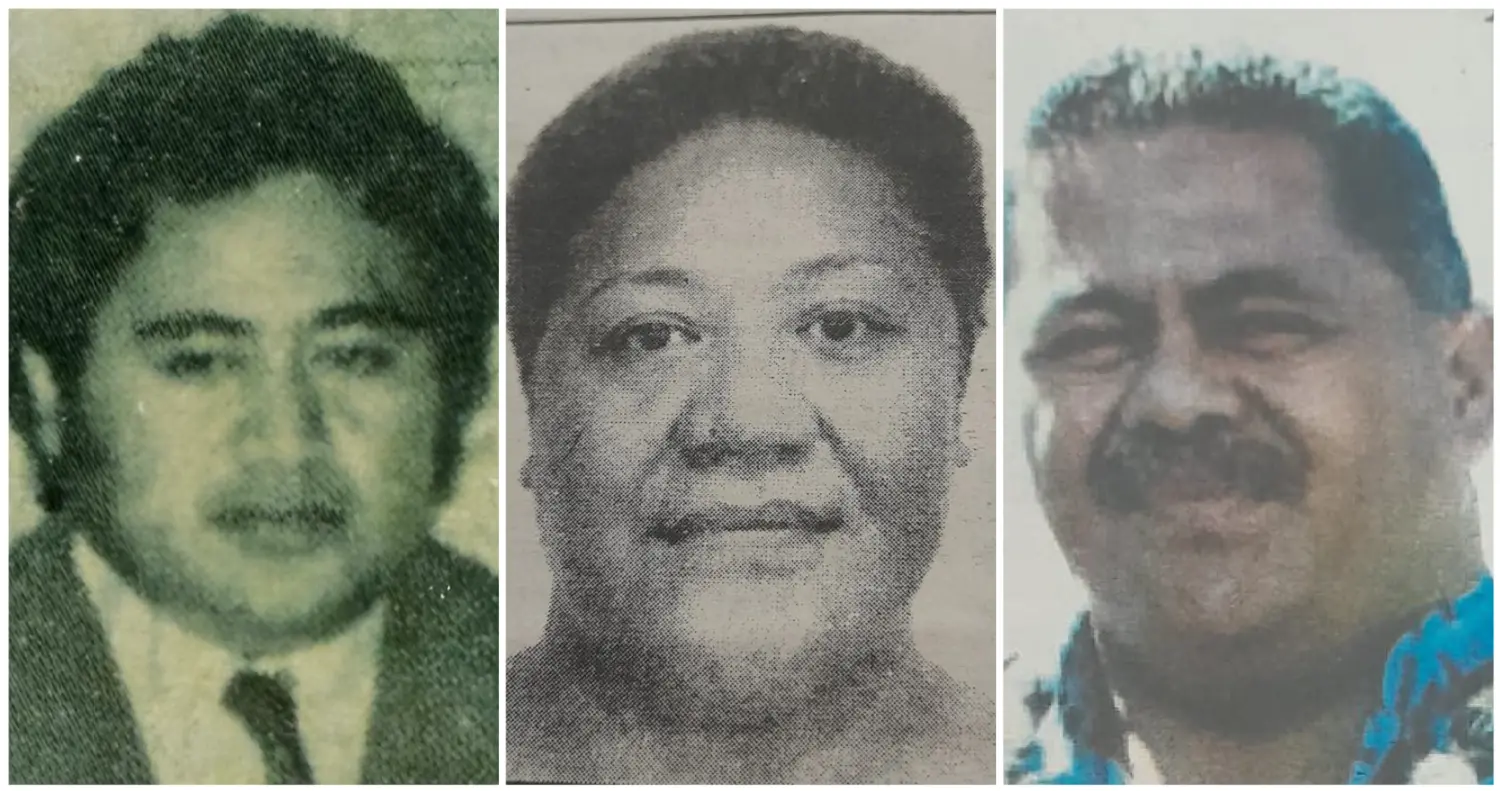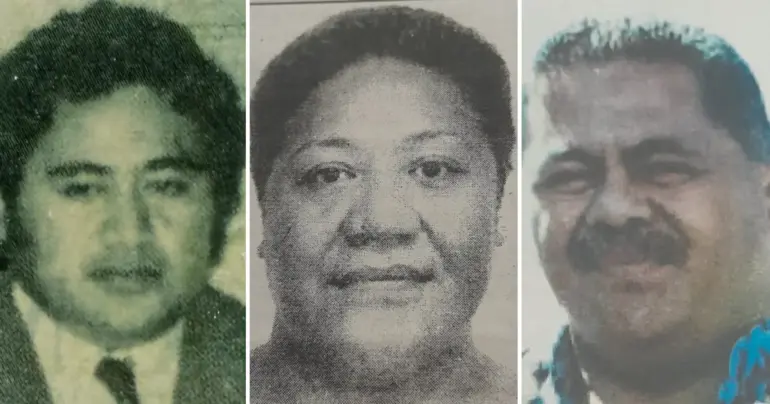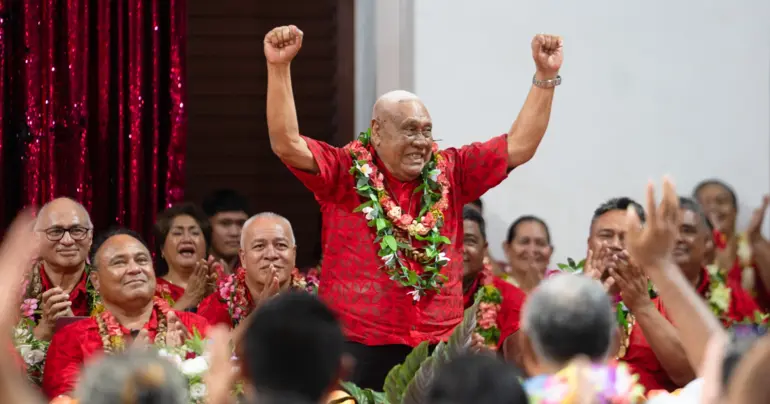The political journey: How did the top three get here?
 By Andrina Elvira Burkhart
•
28 August 2025, 12:00PM
By Andrina Elvira Burkhart
•
28 August 2025, 12:00PM
With polling day just one day away on Friday, Samoa stands at a major crossroads. The 2025 snap general election will see a dramatic showdown between three of the most influential political figures in the country’s modern history:
Fiame Naomi Mataʻafa, Tuilaepa Saʻilele Malielegaoi, and Laaulialemalietoa Polataivao Fosi Schmidt.
Each of these leaders brings a deep legacy, decades of experience, and loyal support bases into this crucial vote. They also represent very different moments in Samoa’s political story, past dominance, historic change, and new political power.
As the nation prepares to head to the polls, the question is no longer just about who will win seats, but who will lead Samoa through its next chapter.
Tuilaepa Sailele Malielegaoi: Samoa’s longest serving Prime Minister
Tuilaepa Sailele Malielegaoi, born on April 14, 1945, is one of Samoa’s most well-known political leaders. His political journey began in 1981, when at the age of 35, he became a member of parliament for the Lepa constituency.
According to a Samoa Observer article published on Thursday, 21 May 1981, titled “Tuilaepa Wins Lepa Seat”, he won the by-election after the death of the sitting MP, the late Fatialofa Momoe.
Tuilaepa won more than 50% of the total votes, defeating two other candidates:
Fatialofa Alaifatu
Sogimaletavai Amataga
Final vote count (1981 by-election):
Tuilaepa – 69 votes
Fatialofa Alaifatu – 31 votes
Sogimaletavai Amataga – 30 votes
No informal votes
This win was the start of Tuilaepa’s political career, which later made him the longest-serving Prime Minister in Samoa’s history.
Tuilaepa was raised as a Catholic and began his education at Marist Brothers Mulivai, then continued at St Joseph’s College Lotopa.
He received a government scholarship under the bilateral aid programme to study in New Zealand. He attended St Paul’s College in Auckland and later graduated from the University of Auckland with a Bachelor and Master of Commerce. He became the first Samoan to graduate with a Master of Commerce degree.
Public Service before entering politics
1970: Joined the Treasury Department as an economist and accountant.
1973–1978: Promoted to Deputy Financial Secretary.
1978: Moved with his family to Brussels, Belgium, where he worked with the African, Caribbean, and Pacific (ACP) General Secretariat. He helped oversee agreements under the Lomé Convention with the European Economic Community (EEC).
1980: Returned to Samoa and briefly worked again with the Treasury Department before resigning to enter politics.
Political career timeline
1981 (age 35): Elected MP for Lepa.
He briefly became a partner at the accounting firm Coopers and Lybrand, then fully committed to politics.
A lifelong member of the Human Rights Protection Party (HRPP).
Ministerial roles:
1982–1983: Minister of Economic Affairs
1984–1985: Minister of Finance
1988–1991: Again served as Minister of Finance and was appointed Deputy Prime Minister under the late Prime Minister Tofilau Eti Alesana
He also held responsibility for:
Central Bank of Samoa
Inland Revenue Department
Customs
Development Bank of Western Samoa
National Provident Fund
National Pacific Insurance
Western Samoa Life Assurance
Becoming Prime Minister in 1998
In November 1998, Tuilaepa was appointed as Samoa’s sixth Prime Minister following the resignation of his mentor, Tofilau Eti Alesana, who stepped down due to serious illness.
Prime Ministers before Tuilaepa:
Mataʻafa Faumuina Mulinuʻu II
Tamasese Lealofi Tupuola Efi
Tuiatua Tupua Tamasese
Vaʻai Kolone
Tofilau Eti Alesana
Tuilaepa was sworn in with his cabinet in November 1998, continuing as the Member of Parliament for Lepa. His leadership saw many developments across Samoa.
Tuilaepa is married to Gillian Meredith, and at the time they had eight children four boys and four girls.
During his leadership, Samoa saw major improvements in:
Infrastructure
Schools and universities
Health services
Notable projects like the Nafanua Wharf, which was funded by the Australian Government
End of tenure in 2021
Tuilaepa served as Prime Minister from 1998 to 2021, a total of 23 years, making him the longest-serving Prime Minister since Samoa gained independence in January 1962. He was defeated in the 2021 General Election.
2025 Snap Election: A new challenge
Now in 2025, 80-year-old Tuilaepa is once again running for parliament, contesting the seat in the Lepa constituency during the snap general election.
His main opponent this time is Tupua John Tupua, a candidate for the Fa'atuatua i le Atua Samoa ua Tasi (FAST) party.
This election brings a new political battle, with Tuilaepa facing a rising generation of leaders while trying to regain his seat in the same constituency where his political journey began 44 years ago.
Fiame Naomi Mata‘afa: Samoa’s first female Prime Minister
Fiame Naomi Mata‘afa, born in 1957, comes from one of Samoa’s most respected political families. Her father, Mataʻafa Faumuina Mulinuʻu II, was the first Prime Minister of Samoa, and her mother, La‘ulu Fetauimalemau Mata‘afa, was the second Samoan woman elected to Parliament, representing Lotofaga after her husband passed away.
Fiame followed their footsteps and became one of Samoa’s most influential political leaders.
1985 – Fiame elected at 27
Fiame entered parliament at 27 years old, running in the Lotofaga constituency during the 22 February 1985 General Election.
Final election results:
Fiame Naomi Mata‘afa – 82 votes
Asiasiau Sausoo – 70 votes
Luailelupe F. Temese – 27 votes
1 informal vote
Fiame was officially declared elected on 1 March 1985, as reported in the Samoa Observer.
1991 – First woman cabinet minister
In May 1991, under Prime Minister Tofilau Eti Alesana, Fiame was appointed Samoa’s first female cabinet minister. She held a wide portfolio, including:
Ministry of Education
Ministry of Labour
Ministry of Sports and Cultural Affairs
National University of Samoa
Ministry of Hotels
1998 – Continued cabinet role under PM Tuilaepa
In November 1998, when Tuilaepa Sailele Malielegaoi became Prime Minister, Fiame remained in cabinet and continued as Minister for Education.
2006 – New roles
In 2006, Fiame was appointed Minister for:
Ministry of Women, Community and Social Development
Public Service Commission
Public Service Salary Review
At this time, Tuilaepa was still the Prime Minister and Misa Telefoni, the Deputy Prime Minister.
Her long-standing role as Minister of Education (held for 15 years) was handed over to To‘omata Alapati Po‘ese, former Minister of Agriculture.
2011 to 2016 – Minister of Justice
Between 2011 and 2016, Fiame was the Minister of Justice and Courts Administration.
2016 – Deputy Prime Minister
In March 2016, Fiame became the Deputy Prime Minister of Samoa and also served as:
Minister of Natural Resources and Environment
She was also officially confirmed as the Deputy Leader of the Human Rights Protection Party (HRPP) after winning a caucus vote over Faumuina Tiatia Liuga (vote result: 21–19)
2020 – Resignation over LTC Bills
In September 2020, Fiame resigned from HRPP and her Cabinet position, saying she could no longer support the government's push to pass the Land and Titles Court (LTC) Bills.
The Bills aimed to set up a separate Land and Titles Court system that would no longer fall under the control of the Supreme Court. The plan was met with strong opposition from:
Samoa Law Society
Local and international lawyers
Former judges
Human rights organisations
The United Nations Human Rights Council
After resigning, Fiame became an independent MP.
In March 2021, Fiame officially joined the Fa‘atuatua i le Atua Samoa ua Tasi (FAST) Party and became the Party Leader.
In the 9 April 2021 General Election, Fiame led FAST to a historic result, tying with HRPP at 25 seats each. When Independent MP Tuala Iosefo Ponifasio joined FAST, they had 26 seats.
HRPP tried to add an extra woman MP (Aliimalemanu Alofa Tuuau) using constitutional provisions, creating a 26–26 tie again.
May 2021 – Constitutional Crisis
The Head of State tried to cancel the results and call for a new election, but FAST challenged the decision in court. The Supreme Court ruled in FAST's favour.
Despite the court order, the swearing-in on 24 May 2021 was blocked by the absence of the Clerk of Parliament and Head of State. FAST went ahead with a swearing-in outside Parliament under the doctrine of necessity.
On 23 July 2021, the Court of Appeal ruled that the swearing-in was legal and constitutional, making Fiame the official Prime Minister.
Fiame becomes Samoa’s first female prime minister
Fiame Naomi Mata‘afa became Samoa’s first female Prime Minister and the sixth Prime Minister since independence in 1962.
Her win marked the end of:
40 years of HRPP rule
22 years of Tuilaepa as Prime Minister
Fiame was praised for her leadership and political values. Experts said the 2021 victory was due to her experience, trustworthiness, and deep political roots—not just because of her gender.
2025 – Changes in leadership and new party
In January 2025, Fiame was expelled from FAST by its leader Laauli.
In May 2025, after her government lost the national budget vote, Parliament was dissolved.
Fiame formed a new political party called the Samoa Uniting Party, with 26 members joining her. She became the Party Leader.
2025 Snap Election – Fiame back in Lotofaga
Fiame is running again in the Lotofaga constituency in the 2025 snap election. Her rivals are both candidates from her former party FAST:
Fiaola Iosua Lole (FAST)
Fuimapoao Taliilagi Beth Onesemo (FAST)
Fiame’s journey is a story of service, strength, and historic leadership. From her early start in 1985 to becoming Samoa’s first woman Prime Minister, Fiame Naomi Mata‘afa continues to be a powerful and respected voice in Samoan politics.
Laauli’s Political Journey: From Deputy Speaker to FAST Leader
Laaulialemalietoa Polataivao Fosi Schmidt, commonly known as Laauli, is one of Samoa’s most well-known political leaders today. He first entered Parliament in 2006 and has held several important roles over the years. He is the son of the late Polataivao Fosi, a former Cabinet Minister and one of the founders of the Human Rights Protection Party (HRPP).
2006 – Enters Parliament and Appointed Deputy Speaker
According to a Samoa Observer article titled “Laauli follows father as whip”, published in March 2006, Laauli was elected as the Member of Parliament for Gagaʻifomauga No. 3 during the 2006 General Election. He won 295 votes, despite four other candidates contesting the seat.
Later that same year:
He was appointed Assistant Whip for the ruling HRPP.
He was also chosen as the Deputy Speaker of the Legislative Assembly, after the previous Deputy Speaker, Tolofuaivalelei Falemoe Leiataua, became the new Speaker of the House.
Growing up around politics, Laauli often accompanied his father to political meetings and events. Politics has always been a big part of his life.
2006–2011: Deputy Speaker of the House
2011–2016: Speaker of the House
Laauli served as Deputy Speaker for five years and then became the Speaker of the Legislative Assembly from 2011 to 2016.
2016 – Appointed Minister of Agriculture, Fisheries and Scientific Research
After the 2016 election, Laauli was appointed as the Minister of Agriculture, Fisheries and Scientific Research under the HRPP government.
However, he resigned from the Cabinet in August 2017 following internal disagreements.
2020 – Court Case and Return to Politics
In June 2020, Laauli was cleared of criminal charges by the court.
July 2020 – Founded FAST Party
On 30 July 2020, Laauli officially launched the Fa‘atuatua i le Atua Samoa ua Tasi (FAST) Party, forming a new political movement after leaving HRPP.
November 2020 – Won By-Election for FAST
Laauli ran in the Gagaʻifomauga No. 3 by-election as a FAST candidate and won, returning to Parliament under his new party.
April 2021 – FAST Wins Election and Laauli Becomes Minister
FAST won the April 2021 General Election, ending HRPP’s 40-year rule. Laauli was appointed the Minister of Agriculture and Fisheries in the new government led by Prime Minister Fiame Naomi Mata‘afa.
2025 – Conflict Within FAST and Leadership Changes
On 10 January 2025, Prime Minister Fiame Naomi Mata‘afa removed Laauli from Cabinet.
Just five days later, on 15 January 2025, Laauli and other party members expelled Fiame from FAST and re-elected Laauli as the Party Leader.
2025 Snap Election – Contesting Gagaʻifomauga No. 3
Now, in the upcoming 2025 Snap Election, Laauli is once again contesting the Gagaʻifomauga No. 3 seat under the FAST Party.
His main opponent is Faaulusau Fatoatoa Rosa Duffy Stowers, who is representing the HRPP in this election.
From being a Deputy Speaker in his first year as MP to later becoming Speaker, Minister, and Party Leader, Laauli’s political career has been filled with important roles, leadership changes, and major events.
With the 2025 snap election only days away, all eyes are on the contest between Laauli and his HRPP rival in Gagaʻifomauga No. 3, a race that could once again shape the future of Samoa’s politics.
As Samoa prepares to vote on Friday, the outcome of the 2025 snap election will mark a major turning point in the nation’s political journey.
Three powerful leaders—Fiame Naomi Mataʻafa, Tuilaepa Saʻilele Malielegaoi, and Laaulialemalietoa Polataivao Fosi Schmidt—are once again in the spotlight, each carrying their own vision, legacy, and loyal supporters into the polls.
Tuilaepa is not only a former Prime Minister who led the country for 22 years—he also holds the record as Samoa’s longest-serving Member of Parliament, first elected in 1981.
Fiame made history in 2021 as Samoa’s first female Prime Minister, and remains one of the most experienced women in Pacific politics.
Laauli, the son of a founding HRPP leader, has carved his own path by becoming the founder and current leader of FAST, the party that ended HRPP’s four-decade rule.
Voters now face a big decision:
Will they bring back the long-serving former Prime Minister Tuilaepa?
Will they give Fiame a second chance to continue the leadership she began in 2021?
Or will they continue to support Laauli and the FAST party he created?
With the country watching closely, and emotions running high, the results of this election will shape Samoa’s direction for the next five years and possibly the next generation.
The decision now rests in the hands of the people.
 By Andrina Elvira Burkhart
•
28 August 2025, 12:00PM
By Andrina Elvira Burkhart
•
28 August 2025, 12:00PM











